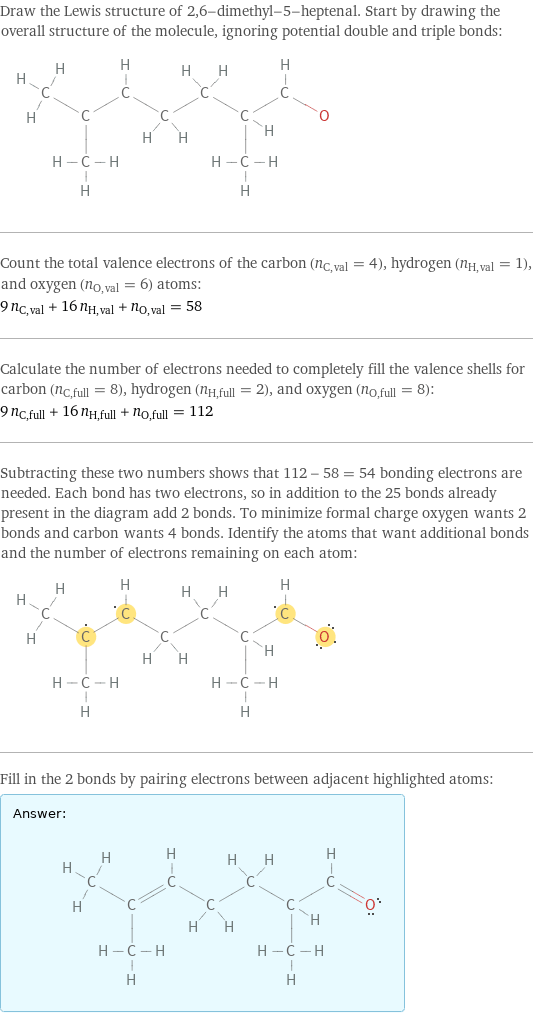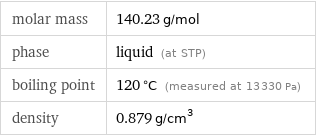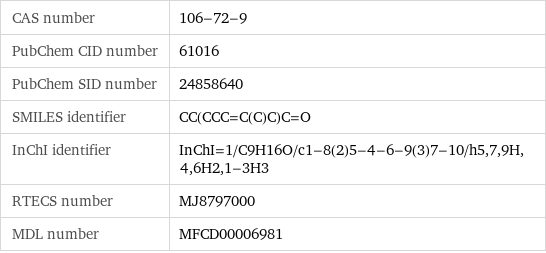Input interpretation

2, 6-dimethyl-5-heptenal
Chemical names and formulas

formula | (CH_3)_2C=CHCH_2CH_2CH(CH_3)CHO Hill formula | C_9H_16O name | 2, 6-dimethyl-5-heptenal IUPAC name | 2, 6-dimethylhept-5-enal alternate names | 2, 6-dimethylhept-5-enal | melonal mass fractions | C (carbon) 77.1% | H (hydrogen) 11.5% | O (oxygen) 11.4%
Lewis structure

Draw the Lewis structure of 2, 6-dimethyl-5-heptenal. Start by drawing the overall structure of the molecule, ignoring potential double and triple bonds: Count the total valence electrons of the carbon (n_C, val = 4), hydrogen (n_H, val = 1), and oxygen (n_O, val = 6) atoms: 9 n_C, val + 16 n_H, val + n_O, val = 58 Calculate the number of electrons needed to completely fill the valence shells for carbon (n_C, full = 8), hydrogen (n_H, full = 2), and oxygen (n_O, full = 8): 9 n_C, full + 16 n_H, full + n_O, full = 112 Subtracting these two numbers shows that 112 - 58 = 54 bonding electrons are needed. Each bond has two electrons, so in addition to the 25 bonds already present in the diagram add 2 bonds. To minimize formal charge oxygen wants 2 bonds and carbon wants 4 bonds. Identify the atoms that want additional bonds and the number of electrons remaining on each atom: Fill in the 2 bonds by pairing electrons between adjacent highlighted atoms: Answer: | |
3D structure

3D structure
Basic properties

molar mass | 140.23 g/mol phase | liquid (at STP) boiling point | 120 °C (measured at 13330 Pa) density | 0.879 g/cm^3
Units

Liquid properties (at STP)

density | 0.879 g/cm^3 refractive index | 1.444
Units

Chemical identifiers

CAS number | 106-72-9 PubChem CID number | 61016 PubChem SID number | 24858640 SMILES identifier | CC(CCC=C(C)C)C=O InChI identifier | InChI=1/C9H16O/c1-8(2)5-4-6-9(3)7-10/h5, 7, 9H, 4, 6H2, 1-3H3 RTECS number | MJ8797000 MDL number | MFCD00006981
Safety properties

flash point | 60.56 °C